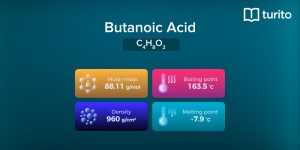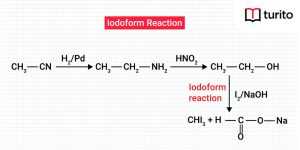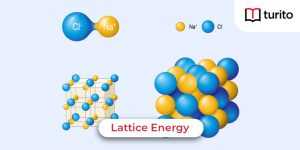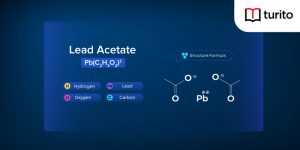Lithium Bromide
Lithium bromide is a chemically produced compound named ‘LiBr’. It can easily dissolve in water, alcohol, and ether. Lithium hydroxide is treated with hydrobromic acid to produce it. It has been used for catalytic dehydrohalogenation to create olefins on a limited scale.
Lithium and bromine aqueous solutions often have low water vapor strengths. Lithium and bromine concentrated aqueous solutions can effectively dissolve large amounts of polar organic materials like cellulose.
In a series of elements listed on a periodic table, lithium (Li) is the third element. It can chemically react with the element bromine (Br) to create a substance known as lithium bromide (Libr). Although it is a form of salt similar to sodium chloride (NaCl), it varies from other salts in that it has an extremely hygroscopic character.
What is Lithium Bromide (LiBr)?
Lithium bromide (LiBr) is an ionic combination of bromine and lithium known as lithium bromide. Lithium Bromide Chemical Formula is Li. An alkali metal with three electrons is lithium. Lithium has an electrical configuration of 2,1. It, therefore, possesses a single electron in its outermost shell. On the contrary, bromine is a non-metal with a single atom that contains 35 electrons. 2,8,18,7 is its electrical configuration.
As a result, its valence shell contains seven electrons. Lithium has the same electrical properties as the closest noble gas. Lithium may achieve an electrical configuration similar to the closest noble gas, Kr, by donating one electron, whereas bromine can do so by absorbing one electron. Li eventually creates an ionic link with bromine by giving it one of its electrons. By achieving an electronic state similar to the nearest noble gas, both elements achieve stability and combine to form the new compound LiBr.
Interesting Facts of Lithium Bromide Salt (LiBr)
According to the periodic table, lithium (Li) is the third element in a sequence of elements. It can interact chemically with an element like bromine (Br) to create the chemical compound lithium bromide (Libr). It is a form of salt similar to sodium chloride (NaCl), but what sets it apart from other salts is its natural hygroscopic nature.
Lithium bromide (bromine and lithium) is a very helpful compound in many different places because of this characteristic. Even though it is naturally available due to its widespread use, it is now generated artificially using industrial techniques.
Lithium carbonate, lithium, and hydrobromic acid make lithium bromide. For the two chemicals to interact, they are both suspended in water. According to this process, bromine and lithium precipitate in that aqueous medium.
Lithium bromide is most frequently used as a dehumidifier in air conditioning systems and occasionally as a salt that absorbs heat in absorption refrigeration systems.
The use of lithium bromide as a catalyst for the hydroformylation and oxidation of organic compounds, as well as occasionally for their deprotonation and dehydration, are some of its further applications. It is also used in medical science to purify certain steroids used to cure illnesses or numb pain.
Another notorious sedative from the first half of the 20th century is lithium bromide. Lithium bromide, therefore, has some psychotropic characteristics. The medication lithium bromide is used to treat bipolar disorder is another fantastic application for it.
Properties of Lithium Bromine (LiBr):
The following is a list of lithium bromide’s chemical and physical properties.
| Lithium Bromine | LiBr |
| Boiling Point or Temperature | 1265°C |
| Melting Point or Temperature | 552°C |
| Molar Mass | 86.845 g/mol |
| Density | 3.464 g/cm3 |
| LiBr | Inflammable-free |
| Chemical Formula | LiBr |
Numerous polar organic molecules, including cellulose, can be dissolved by it.
It has a consistent nature and typically does not respond quickly.
Similar to NaCl, its anhydrous form produces cubic crystals.
Lithium bromide and silver nitrate are formed when lithium bromide and silver nitrate combine with silver nitrate.
Lithium bromide’s reaction with chlorine results in the formation of lithium chloride salt and bromine gas. Below can show the reaction:
Cl2 + 2LiBr → Br2 + 2LiCl
LiBr is soluble in water. As the temperature rises, it becomes more soluble in water. For instance, its solubility in water is 143 g/100 ml at 0 degrees celsius and increases to 166.7 g/100 ml at a temperature of 20 degrees Celsius.
Additionally, it is soluble in ethanol, acetone, ether, and methanol. In pyridine, it is only marginally soluble.
Structure of Lithium Bromide:
In LiBr, an electron is transferred from lithium to bromine to create an ionic connection in lithium bromide. As lithium gives up an electron, Li+ gains a positive charge and becomes a cation. Bromine generates an anion or acquires a negative charge while accepting an electron, or Br-. The cubic crystalline structure of lithium bromide.
Production Process of Lithium Bromide:
There are numerous ways to create lithium bromide. These include some of the following:
By combining hydrobromic acid and lithium carbonate, lithium bromide can be made by synthesizing lithium carbonate and hydrobromic acid. The chemical reaction would be as follows:
Li2CO3 + 2HBr → 2LiBr + H2CO3
Lithium and bromine can also be made by reacting lithium hydroxide with an aqueous solution of hydrobromic acid or hydrogen bromide to produce lithium bromide. Its chemical reaction would be as follows:
LiOH + HBr → LiBr + H2O
Uses or Applications of Lithium Bromide:
The use of lithium bromide is widespread. Here are a few applications for it:
- Lithium bromide features hygroscopic properties; therefore, it is a desiccant in air conditioning systems. It is used in air conditioners for absorption chilling along with water.
- LiBr aids in the creation of numerous organic molecules.
- Numerous medications are synthesized using it in the pharmaceutical industry.
- Several inorganic chemicals, including lithium chloride and others, are also made using it.
- In the early 1900s, it was utilized as a sedative, but because of its negative cardiovascular consequences, doctors avoided its usage.
- Lithium bromide is used in the treatment process of bipolar disorder.
- LiBr is used in olefin biosynthesis for catalytic dehydrohalogenation.
- Given that it is hygroscopic and can readily absorb extra vapor, it is used in refrigerators as a non-CFC substitute. Making the system ecologically friendly.
- Since it can be dissolved in ether and other organic solvents, it is employed in emulsions.
Lithium Bromide Health Effects
The most severe health effects associated with overexposures of lithium compounds, including lithium bromide, are its harmful consequences on the central nervous systems. The primary health effects of overexposure would be skin sensitization and irritation of the affected eyes and the skin.
Inhalation:
Mist inhalation can affect the tissues in the nose, mouth, and other respiratory organs. Lithium Bromide may cause symptoms similar to that observed for other lithium compounds when inhaled in relatively high dosages (e.g., ringing in the ears, vomiting, nausea, blurred vision, diarrhea, drowsiness, and twitching). Inhaling chemical bromides (such as lithium bromide) over an extended period or repeatedly might result in rashes that resemble acne.
Skin or Eye Contact:
Excessive skin exposure might result in stinging, burning, and reddening. Prolonged or recurrent skin exposures can bring on dermatitis. An allergic skin reaction could happen after frequent skin contact. Lithium bromide irritates the eyes; symptoms of overexposure include pain and ocular redness. Long-term eye contact might harm your eyes.
Note:Lithium bromide handling needs to be properly trained. Make sure Lithium bromide containers are appropriately labeled. On a solid surface, slowly open the containers. Before using the product, please read the instructions that came with it. Lithium bromide storage areas must be easily identifiable, well-lit, unobstructed, and only accessible by skilled and authorized personnel. Containers should be kept from the direct sun and other sources of extreme heat. |
Skin Absorption:
Serious skin absorption exposure could result in symptoms resembling those in “Ingestion.”
Ingestion:
Lithium bromide can have serious side effects after ingestion, including ringing in the ears, rashes, vomiting, nausea, diarrhea, speech difficulties, lethargy, twitching, vision problems, and coma. Lithium bromide consumption in moderately high doses can harm the kidneys.
Lithium bromide may also cause irritation or burns to the tissues of the gastrointestinal tract, including the mouth, throat, and esophagus. Lithium molybdate is one soluble molybdenum compound easily absorbed by the digestive system. Ingestion overexposure can cause severe gastrointestinal distress, diarrhea, liver, spleen, and kidney damage.
Conclusion
So, what is LiBr? Lithium bromide (LiBr) is a chemical combination of lithium and bromine. Given its severe hygroscopic nature, LiBr can be used as a desiccant in some air conditioning systems. LiBr is generated by combining lithium hydroxide with bromine or adding hydrobromic acid to an aqueous dispersion of lithium carbonate. In contrast to other alkali metal bromides, it produces several crystalline hydrates.
Frequently Asked Questions
1. Is Lithium Bromide harmful?
The use of lithium bromide, whether short or long-term, can result in various symptoms, including ringing in the ears, rash, nausea, diarrhea, vomiting, speech difficulties, lethargy, twitching, visual problems, and coma. Lithium bromide consumption in moderately high doses can harm the kidneys.
2. What kind of chemical is Lithium Bromide?
LiBr is an ionic combination of lithium and bromine, known as lithium bromide. An alkali metal with three electrons is lithium. Lithium has an electrical configuration of 2,1. It, therefore, possesses a single electron in its outermost valence shell.
3. What are the uses of Lithium Bromide?
Lithium bromide is a highly hygroscopic chemical. It is frequently employed in absorption chillers, where water serves as the refrigerant. Due to LiBr’s high affinity for water, the system is a greener non-CFC substitute because it is simple to absorb excess vapor.
4. Is Lithium Bromide corrosive in nature?
The highly corrosive brine lithium bromide quickly attacks steel and other ferrous metals. The hydrogen gas produced by the corrosion process decreases the internal pressure inside the chiller. The unit doesn’t work well because of the decreased vacuum.

Relevant Articles
Butanoic Acid – Structure, Properties, Uses
Butanoic Acid The carboxylic acid, butanoic acid, has the structural …
Butanoic Acid – Structure, Properties, Uses Read More »
Read More >>What is Iodoform? Characteristics and Uses
Iodoform The formula for Iodoform is CHI3. It is biotic …
What is Iodoform? Characteristics and Uses Read More »
Read More >>Lattice Energy – Explanation, Factors & Formulas
Lattice Energy Lattice energy evaluates the intensity of the ionic …
Lattice Energy – Explanation, Factors & Formulas Read More »
Read More >>Lead Acetate – Definition, Properties, Uses
Lead Acetate Have you ever licked lipstick when you sketch …
Lead Acetate – Definition, Properties, Uses Read More »
Read More >>




















Comments: